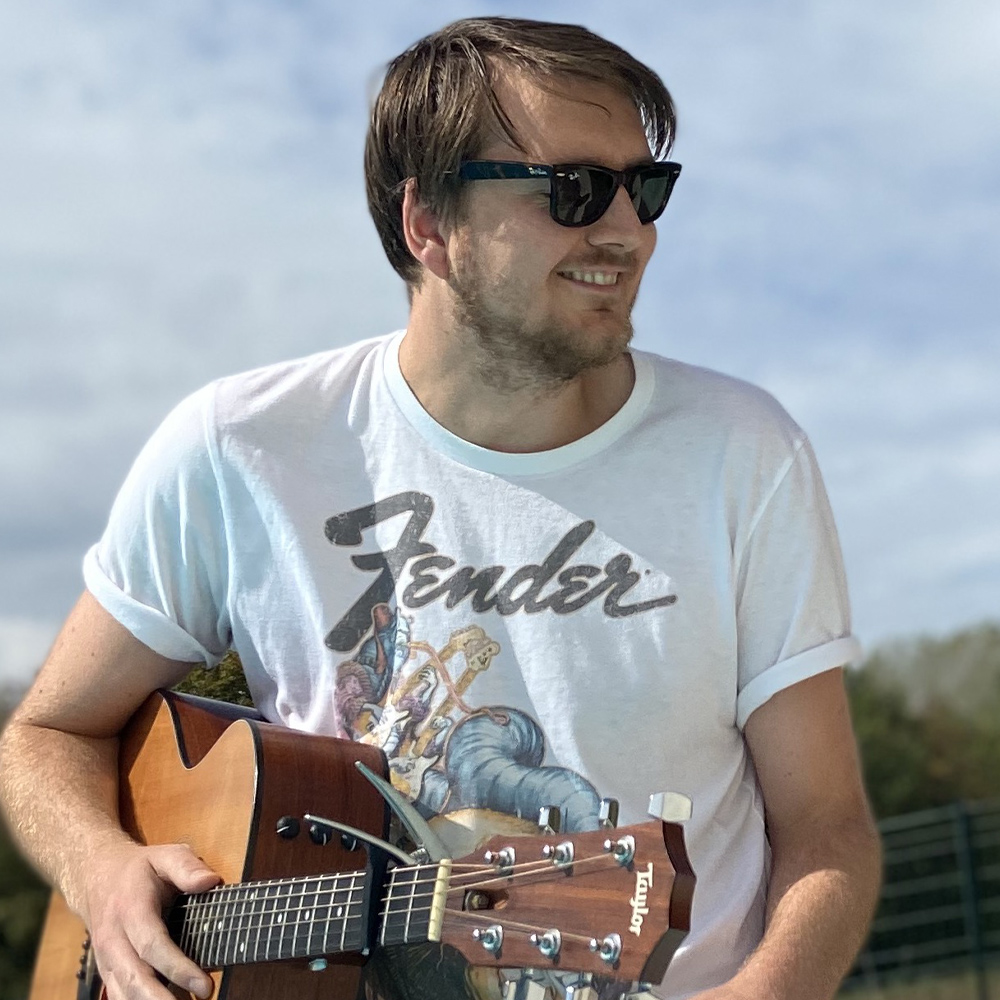Best pedalboard power supplies 2025: quiet and efficient power for your pedals
Say goodbye to unwanted hiss and ground loop hum as we hand-pick the best guitar pedal power supplies for every budget

Building a pedalboard is the ultimate never-ending task for most guitarists – arguably even more elusive than finishing that half-written song that’s been sitting around for years. But eventually, all that tone chasing leads to one unavoidable truth: the best pedalboard power supplies are a crucial part of any setup.
Your choice of power supply doesn’t just impact how many pedals you can use in one go; it can be the difference between a noisy mess and the quietest, crispest, most pristine signal you ever did hear.
Here at Guitar Player, we've got decades of experience testing pedalboard power supplies both for reviews and when using them in our own musical endeavors. We've used them at home, in the rehearsal room, and out on the road so we know what we're talking about when we say which pedal power is the best out there.
If you're looking for a great all-rounder, the Strymon Ojai provides plenty of power for high-draw pedals whilst remaining nice and compact. If that's a little too pricey for you, then check out the T-Rex Fuel Tank Junior, which delivers superb quality, clean power for relatively little money.
Here, we’ve rounded up a number of the best-in-class pedal power supplies currently on the market, from the miniscule to the monolithic. If you’re not exactly sure what you’re looking for, our how to choose section further down this page is a great primer for what you should be thinking about when it comes to pedal power.
Our top picks

With each outlet offering a massive 500mA of power, the Strymon Ojai is an incredibly powerful PSU that doesn't take up too much space underneath or on top of your pedalboard. Automatic power compatability and the ability to expand via a 24v thru jack make it a true pedal powerhouse.
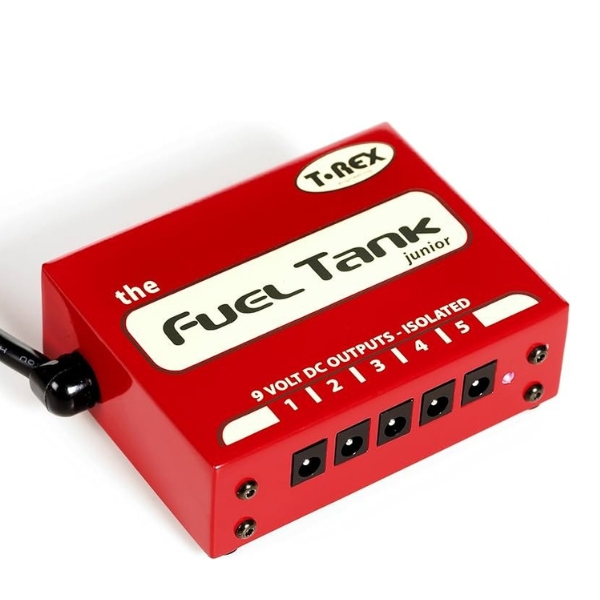
Coming in around the $/£150 mark, the T-Rex Fuel Tank Junior is a high-quality option for powering your 'board on a budget. It's robustly built and offers power for 5 different pedals whilst remaining small enough to comfortably be mounted underneath your pedalboard.
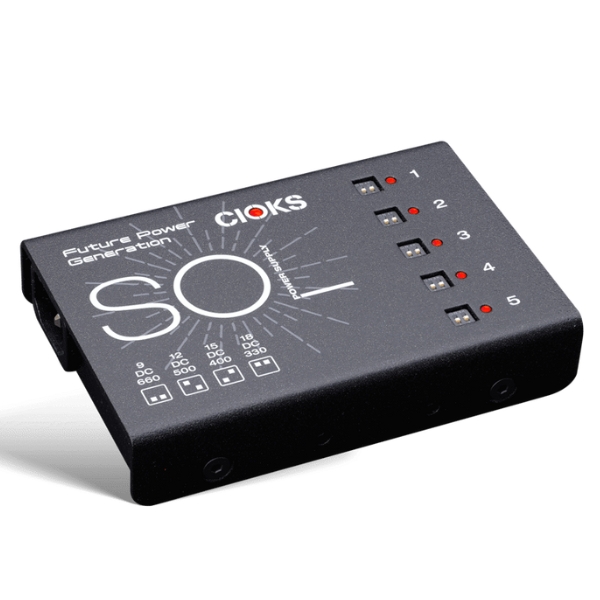
Featuring some of the cleverest design we've seen from a pedalboard power supply, the Cioks Sol is a teeny tiny PSU that provides flexible power from a minuscule form factor. It's got 5 outputs, each of which can be switched between 9v, 12,v 15v, and 18v, making it small but supremely versatile.
Best overall
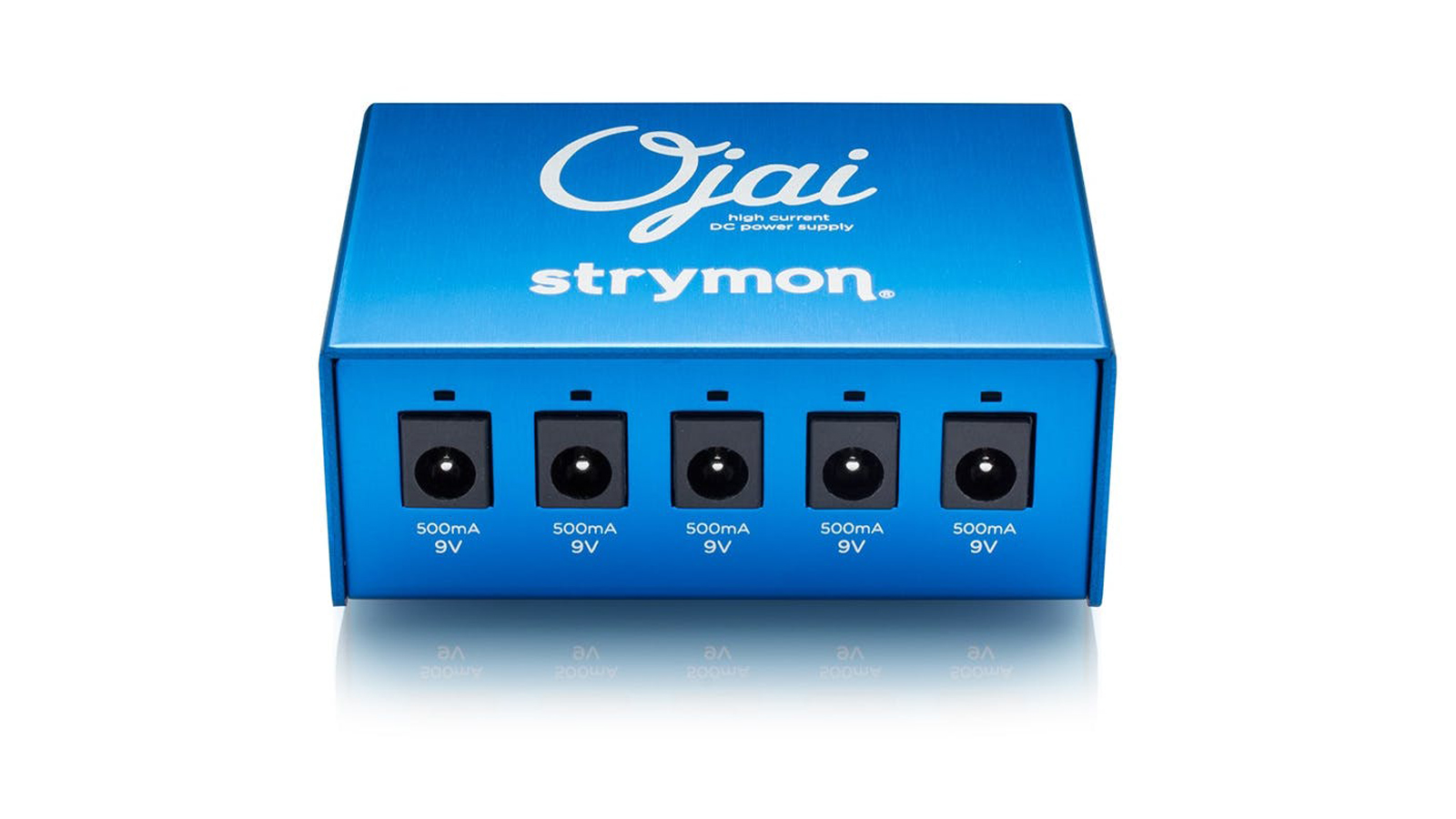
1. Strymon Ojai
Our expert review:
Specifications
Reasons to buy
Reasons to avoid
This more compact offering from Strymon is one of the best pedalboard power supplies for those with only a handful of effects. With five fully isolated 9v outputs each offering a massive 500mA, you’ve got enough juice to cater for the most power-hungry pedals out there.
Its all-analog circuitry means that you get two stages of isolation, so expect this to be an incredibly quiet unit – no ground loop or AC line noise here. Another thing that makes the Ojai one of the best is its automatic power compatibility, so whether you’re running on 240v, 120v, or 100v, you’re still going to get good, clean power to your pedals – this is an absolute must for touring guitarists.
Another nifty feature is the ability to combine more than one of these together. The Ojai has a 24v thru jack to expand your set-up with another unit, so that you can carry on using it even if you add more pedals to your board.
Best budget

2. T-Rex Fuel Tank Junior
Our expert review:
Specifications
Reasons to buy
Reasons to avoid
There haven’t been many product names more fitting than the T-Rex Fuel Tank Junior – this thing is built like a tank. A physically smaller and more affordable version of the original Fuel Tank, the Junior delivers no-nonsense isolated power in a compact and road-ready package. Clocking in at under $/£100, clean power has never been more accessible.
With five isolated 9V outputs delivering 120mA each, the Junior is more than capable of handling smaller pedalboards with ease. It is compact enough to mount underneath most pedalboards and tough enough to handle life on the road. Handy extras include a global voltage switch (115V–230V) and red LED indicators that show when each output is active.
The only real limitation here is current. With 120mA per output and a total output of 660mA, the Fuel Tank Junior isn’t built for power-hungry pedals like certain Electro-Harmonix units or advanced delays. But for most players with a modest board, and especially for those who travel light, it is a fantastic and affordable solution.
Best compact

3. Cioks Sol Future Power Generation
Our expert review:
Specifications
Reasons to buy
Reasons to avoid
Cioks’ Sol Future Power Generation is an exceedingly clever contemporary design, and one of the most innovative entrants with respect to smaller pedal power supplies. It provides just five isolated outputs, but each of these isolated outputs is switchable between four settings – and the whole thing, despite its diminutive size, is directly mains-fed.
This chunk of pedal power is barely the size of an external hard drive, yet it receives a kettle lead and gives up to 30W of clean power to its five completely isolated outputs. Two dip switches control the ultimate output of each outlet, with a handy legend printed onto the unit itself to direct users. The options are 9V at up to 660mA, 12V at up to 500mA, 15V at up to 400mA and 18V at up to 330mA – enough to cover almost any pedal’s individual requirements (save for some of the heavier-duty multi-effects, such as Eventide’s H90).
The high amperage of the 9V option is useful, too, as analog dirt effects could be daisy-chained safely, and relatively noiselessly – meaning this tiny thing can serve pedalboards well above its posted weight. The future is now!
Best for live

4. Walrus Audio Canvas Power 22
Our expert review:
Specifications
Reasons to buy
Reasons to avoid
Walrus Audio has previously been regarded as the old guard for boutique pedals, having made a serious name for itself via pitch-perfect interpretations of essential effects; the Julia chorus remains a firm favorite for professional and gigging guitarists, even amongst a crowded field today.
While still servicing the upper levels of the pedal niche, the brand has recently branched out into true essentials, from an accessible range of indispensable effects in the Fundamental pedal series to the Canvas range – a line-up of practical utilities, including re-amp and DI boxes, a tuner, and, naturally, pedal power supplies. Our pick is the Canvas 22, the largest power supply of the bunch.
As you might expect, the ‘22’ refers to the number of outputs it offers – 20 of which provide 9V at up to 500mA, and two of which can be switched between 9, 12 and 18V. Additionally, there’s a USB-C port for up to 5V charging, and a 24V thru socket for chaining multiple Canvas power supplies to one plug. The Canvas 22 cuts a slim and sleek form despite its size, allowing it to winnow its way under almost all angled pedalboards; it can do this thanks to an external laptop-style power brick, which hosts the bulkier mains-converting circuitry. This also greatly reduces the possibility of hum introduced by situating pedals over the supply itself.
As far as pedal power toolkits go, we think it’s hard to get much better than this. It’s a comprehensive power supply with a low profile and some nifty modern conveniences, designed top-to-bottom with practicality in mind. Some more high-voltage outputs would be nice, but it’s hard to sniff at this otherwise complete pedalboard solution.
Best with USB

5. Fender Engine Room LVL 8
Our expert review:
Specifications
Reasons to buy
Reasons to avoid
Fender’s Engine Room series is a smart-looking raft of highly practical units, marrying the unique style of Fender’s recent pedal output with the most thankless of pedalboard utilities. The Engine Room LVL 8 is an eight-output supply, housed in a luxurious-looking, demi-shiny, anodized and brushed aluminum chassis. With curves. And cool vent holes.
The LVL 8’s outputs comprise 6 9V at up to 500mA, and two switchable between 9V, 12V and 18V. At the end of this helpful row you’ll find a USB-A and a USB-C output, for 5V charging and/or pedalboard-light-powering services. The unit is self-contained, needing only a kettle lead to receive mains power – a godsend in a world of especially warty wall warts.
The size of the LVL8 might be a dealbreaker for those hoping to stash their supply away under their pedalboard, but its form means you wouldn’t begrudge having it on display up top either. Use this for a smart solution to a medium-sized board!
Best voltage sag

6. MXR M238 Iso-Brick
Our expert review:
Specifications
Reasons to buy
Reasons to avoid
Stocky but lightweight, the Iso-Brick from MXR earns its way onto our list of the best pedal power supplies with its 10 isolated outputs covering a range of voltages and currents for seemingly any pedal.
The Iso-Brick runs really quiet, even with the most power-hungry of pedals. It has 9v outputs ranging from 100 to 450mA. There are also two 18v outputs and two variable outputs with selectable voltage from 6-15v. With this you can recreate voltage sag, as you’d get with a dying battery – this is where some old-school fuzz pedals sound their best so it’s a nice feature to have for some players.
It’s lightweight and the handy LEDs let you know that everything’s okay when you’re on a dark stage – the perfect gigging tool.
Also consider
For us, the pedal power supplies above should cover off most guitarists needs. We appreciate there's no one size fits all option though, so if you didn't find what you were looking for above, here are some more great options to look at.
Friedman Power Grid 10
10 x 9v 350mA
There Friedman Power Grid 10 features 10 isolated 9v outputs, each with a 350mA output. Each output has enough power to cater for most pedals out there, even advanced digital ones. Regardless of what mix you’ve got of digital and analog pedals, the Friedman Power Grid can cater for it all, doing so with no unwanted noise or hum. It also features universal power allowing for usage in various countries. As long as all your pedals require no more than 9v, it’s one of the best pedalboard power supplies there is.
★★★★½
Voodoo Labs Mondo
6 x 9/12v 100mA | 2 x 9/12v 250mA | 2 x 9/12v 400mA | 2 x 9v 400mA
Expect clean, quiet power with the Mondo. The 12 isolated outputs ensure that you’re supplying your pedals with what they need to operate to their full potential, without the annoyance of any unwanted noise. There’s also a built-in silent fan that will help regulate the temperature of the unit; handy when playing in small, hot venues.
★★★★½
EBS Runsten
2 x 9v 900mA | 8 x switchable, 9/12v 800mA
The outlets all start at 9V – but have a max current draw of 900mA, which trumps the vast majority of other power supplies, and makes daisy-chaining your analog pedals for more outlet availability extremely viable. Eight of these ten outlets are also switchable, via dip-switches on the side of the unit, to 12V. The practicality doesn’t stop here, though.
★★★★½
How to choose

The best pedalboard power supply for you will depend on how many pedals you have, and what pedals they are. Whilst most pedals require a 9V center negative power supply, there are some that differ from this. Check the voltage your various pedals run at and you’ll quickly start to put together a list of what you need from your power supply.
Current draw
You can trust Guitar Player.
Different pedals draw different currents too. Analog fuzz and overdrive pedals, for example, tend to be fairly low current; you’ll find many that are under 10-20mA. However, powerful digital pedals, like those by the likes of Strymon, Eventide, Line 6 etc, will draw more current. These can require anything from 300mA upwards. If you have a mixture of pedals with different voltage and current requirements, you’ll want a pedalboard power supply that can do it all – whether by offering some high-current outlets, or offering outlets with higher or switchable voltages.
Sizing
If your pedalboard is small, and you’re prepared to keep it that way, you’ll likely be looking for a small power supply to fit your small board, and to keep it light. For most of us, though, it is practically a law of nature that our pedalboards are given to expand. As such, unless you have highly specific and unchanging needs, you might benefit from future-proofing your board with something that can supply more than you need.
FAQs
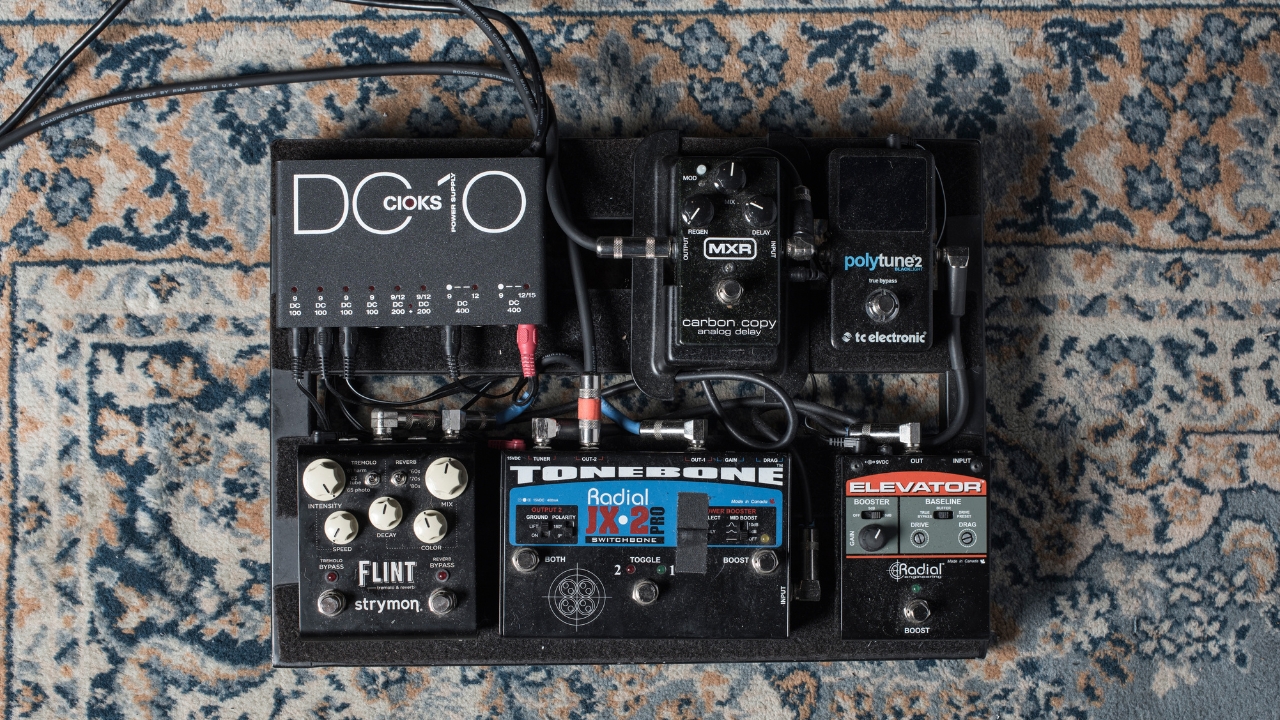
What is daisy chaining, and can I do it to power my pedalboard?
‘Daisy-chaining’ refers to the running of multiple pedals from a single power source – something most all of us will have done at some point or another, knowingly or unknowingly. Those wall warts with multiple outlets hanging off a single cable like Christmas lights are perhaps the most recognizable form of daisy-chain, and illustrate exactly the principle: all pedals share a single source of voltage and current.
This can be useful in some scenarios, but can be actively detrimental in others. For one, the current demands of each pedal add up – so if a power source only has 300mA available, you wouldn’t be able to run more than a few 100mA-demanding pedals without potentially blowing your power supply. More important, though, is the issue of noise. Daisy-chaining pedals can introduce a number of different noise-related issues, ground loops chief amongst them.
Ground loops are caused when a small voltage appears between two different ground references – in this case, your guitar signal and your pedal power’s return path. With each pedal coupling signal ground to power, and with the in-series nature of said power return path, the result is numerous ground loops between each pedal. These, in turn, invite mains power to induce hum into your signal. Not only this, but clock signals from digital and time-based pedals can leech into the signal, resulting in hum-y, hissy, whiney, tick-y noise pollution that isn’t doing anything good for your signal.
It's not all bad news, though. Analog pedals, particularly of a distortive nature, are much more daisy-chain friendly than their digital or time-based counterparts. They also demand much less in terms of current, meaning you won’t be hamstrung by the current limits of a given 9V outlet.
What’s an isolated power supply?
Isolated power is, in short, the solution to the problems illustrated with daisy-chaining explored above. An isolated power supply uses transformers to isolate each outlet from one another, essentially providing each pedal with a power circuit of its own; each pedal power supply outlet enjoys its own supply of voltage and current, and no outlets share the same power return path.
The result is the effective elimination of pedalboard ground loops, and a blissfully quiet signal path. Though some isolated power supply designs can introduce electrical noise of their own (particularly cheaper-designed switch-mode power supplies, which use active high-frequency switching circuitry to drive the transformers), the downsides of isolated power remain near-inconsequential against those of daisy-chaining.
Which brands make the best pedalboard power supplies?
Isolated power supplies are fast becoming the standard, as isolated circuitry becomes cheaper to reproduce. One thing to look out for, though, is the prevalence of cheap power supplies on sites like Amazon and eBay; many will advertise themselves as ‘isolated’, and yet be glorified daisy-chains in a comforting-looking chassis. This is why it’s important to buy only from a tried-and-true brand that you – or your wider network – recognizes!
The brands covered in this round-up represent some of the best and most trustworthy in the biz, whether old-hand companies with a tried-and-true design approach, or new upstart pedal boutiques with a niche understanding of what modern pedals want.
How we test

With nearly six decades of experience writing about and reviewing guitar gear, it's safe to say the team here at Guitar Player knows our stuff. Our gear testing processes are built upon real-world use, an unrivaled technical understanding, and of course, our own passion for great guitar tone.
Our writing team includes many working musicians, and we all use pedalboard power supplies week in, and week out, so when we recommend you a PSU, we're doing so from a place of knowledge.
For each pedalboard power supply, we evaluate the amount of current draw on offer, as this is one of the most important things when selecting a PSU. Each option in this guide has plenty of power for modern pedals, ensuring you can use anything from your collection when needed.
We also look at the noise levels induced by these power supplies. We want whisper-quiet performance, and all of our selected PSUs absolutely deliver this. Isolated outputs are all tested to see how they perform in real life, and we'll even daisy chain pedal together for higher amperage outputs to see how much noise is added.
Finally, we'll look at the size and durability of the unit in question. The size determines what it is best suited for, whether it can be mounted underneath the pedalboard or has to go on top for example. In terms of durability, we're looking to see it will withstand life on the road, putting up with being bashed around and subject to the rigors of touring life.
Read more on how we test gear and services at Guitar Player.
Related buying guides
- You'll need to plug in one of the best electric guitars
- Working on a budget? These are the best electric guitars under $1,000
- Save some cash with the best bass guitars under $500
- Plug in with one of the best guitar cables
- These are the best multi-effects pedals
All the latest guitar news, interviews, lessons, reviews, deals and more, direct to your inbox!
After spending a decade in music retail, I’m now a freelance writer for Guitar Player, Guitar World, MusicRadar and Reverb, specializing in electric and acoustic guitars bass, and almost anything else you can make a tune with. When my head’s not buried in the best of modern and vintage gear, I run a small company helping musicians with songwriting, production and performance, and I play bass in an alt-rock band.
- Ross Holder
- Matt McCrackenJunior Deals Writer
- James Grimshaw



